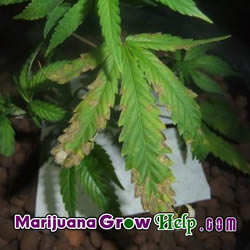Nutrients 101: Nutrient Deficiency and Nutrient Burn

Nutrient Deficiency
So you’ve mixed your nutrients according to the instructions and applied as directed, but your plants are losing their leaves or looking decidedly less than healthy. Your plants probably have a nutrient deficiency. What are you doing wrong, and how can you fix it before your precious plants pay the ultimate price?
If you’ve ruled out pests and other plagues, then what you’re seeing is nutrient deficiency or nutrient burn. In either case, your plants are suffering and they won’t produce well, or possibly even survive, if you don’t act quickly to fix the situation.
Nutrient burn occurs when you have too much fertilizer, and the results can be devastating.
If you’ve recently switched your brand of fertilizer or changed the ratios, you may be at increased risk of nutrient burn. Growing hydroponically can also result in nutrient burn if you’re ratio is thrown off.
Common signs of nutrient problems include:
- yellowing around the corners and edges of the leaves
- splotching and yellow or brown spotting on the leaves
- leaves that are curling and yellowing at the edges
- leaves that are falling off, often after turning yellow
- weak leaves that don’t hold onto the stem well
- red splotches or lines of red on the leaves and stems
- drooping, wilting or sagging leaves
The solution to moderate or severe nutrient burn is to flush your plant with fresh, pH-neutral water. Once your plants have recovered, you can slowly reintroduce your nutrients, but start with fractions of the original amount and curtail your use the moment you see any signs of burn.
If you’re having recurring problems with nutrient burn, be sure that your grow area isn’t too hot. Temperatures should usually be in the mid-70s or the very low 80s during the day, with a cooler spell during the night cycle. When it’s hotter in your grow area, your plants take up more water and they get more nutrients at the same time, which can then lead to nutrient burn.
You might also have your lights positioned too close to your plants. When your lights are too close, you risk actually giving your plant a sun-burn of sorts. Remember to lift your lights as your plants grow, and build your grow area accordingly.
Since the last thing you want is a crispy plant, be sure to keep your heat-producing lights high above the canopy. Use cooler lights, such as LEDs or a few compact fluorescent tube lights, if you need to add additional light closer to your plants or beneath the main canopy.
Another factor that can cause signs of nutrient deficiency or nutrient burn is the humidity in your grow area. Young plants crave humidity, typically between 40 – 70%, and when humidity levels drop below that the plants can show signs of distress. Check your humidity and make sure it’s kept within a comfortable range for your plants.





No comments yet.